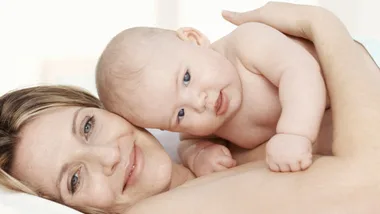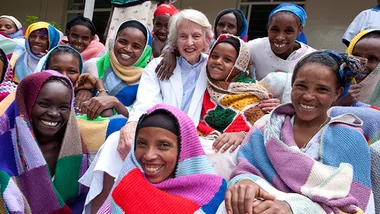I had a long labour with my daughter, which I’m told is very common for first births, but even so it was epic to endure.
I tell people that it lasted for 60 hours, even though my midwives gently explained that I technically was only in established labour for 13 hours. Well, technically that may be true but the remaining 47 hours were by no means a walk in the park. I can assure you of that.
Once my daughter was finally born I remember my husband crying and feeling relief, joy and exhaustion in equal measure.
I was instantly protective of my daughter but terrified of holding her. I was scared that she’d cry and I wouldn’t be able to comfort her. I suddenly felt a huge amount of responsibility on my shoulders; I was the mother of this tiny newborn!
The next day I was excited for some visitors to meet our baby girl in hospital. I was very proud of her and couldn’t wait to introduce her to our family.
I remember quite clearly sitting in a feeding chair as my grandmother, aunt and cousin wandered into my room. I had been trying to get my daughter to latch onto my boob and was feeling a little self-conscious. Did they see my nipple? Should I care?
I thought at the time that once my daughter was attached I’d be able to relax and chat with my visitors while she had her feed. Oh, how wrong I was!
Instead, as my daughter began vigorously sucking, my uterus decided to remind me of what labour pains were all about. Tight, intense waves of cramping began and literally took my breath away.
These weren’t the period-like pains I’d been warned about. These cramps were like the labour pains I’d experienced in the days before.
I suddenly felt light-headed, feverish, and was unable to talk. My heart raced as I closed my eyes and willed the pains to stop. Where’s that option for an epidural now?! And can someone hold my baby – this flippin hurts!
I’d been told that I would experience after-birth pains in my birth classes, but these really caught me off guard. There was certainly no relaxing and casual chatting to my visitors like I’d hoped.
And to make matters worse with every contraction I could feel blood filling my surfboard-sized maternity pad. Not only was I in pain, but I was now terrified of moving from my chair for fear that my pad had leaked and I’d have a less-than-glamorous bloody stain on my tracky pants.
Eventually, thankfully, as my daughter stopped feeding the cramping slowed and eased in intensity. My heart slowed again and was able to focus on the room around me. But after the shock of those contractions I’d lost interest in chatting with my family or cooing over my new baby. The whole experience had knocked my confidence and I wanted to be alone without the expectation of being social.
I found out later that breastfeeding triggers the release of a hormone called oxytocin, which encorages the uterus to contract and shrink back to it’s pre-pregnancy size. And the length of my long labour likely contributed to the intensity of my afterbirth pains.
So my body was only doing what it was meant to do, but I simply wasn’t prepared for it in that moment as my daughter began to suck right as my visitors arrived.
Even if I wanted to be eased into motherhood there was fat-chance of that!


